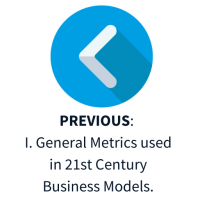As expressed in the intro of this series, 21st century business models use technology to create new value in business models, customer experiences and the internal capabilities that support their core operations. The term includes both digital-only brands and traditional players that are transforming their businesses with digital technologies.
In part I, we introduced general metrics that 21st century business models apply as they become more customer centric.
A bold but not wild statement would be that e-commerce is the parent of all 21st century business models. It refers to the business of selling products online, via computer, and purchases via mobile devices such as smartphones and tablets. E-commerce is often used to refer to the sale of physical products online, but it can also describe any commercial transaction facilitated through the internet. Therefore, we can think of it as a tree trunk, where all of the other digital business models are branches. It didn’t evolve that much until cryptocurrencies, and new business models came along. We now see companies with mixed business models combining online and offline channels:
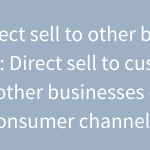
Top e-commerce players
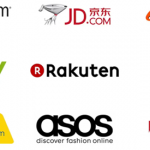
E-commerce takes on a variety of forms depending on the relationships between businesses and consumers and the different objects being exchanged in the transactions between them.
- Retail: The sale of a product by a business directly to a customer without any intermediary.
- Wholesale: The sale of products in bulk, often to a retailer that sells them directly to consumers.
- Dropshipping: The sale of a product manufactured and shipped to the consumer by a third party.
- Subscription: The automatic recurring purchase of a product or service regularly until the subscriber chooses to cancel.
- Physical products: Any tangible good that requires inventory to be replenished and orders to be physically shipped to customers as sales are made.
- Digital products: Downloadable digital goods, templates, and courses, or media that must be purchased for consumption or licensed for use.
- reCommerce: Resale of used, defective or repaired goods.
Important terms to know about the e-commerce
With many branches extending out of E-commerce, the following terms would be used in many customer/user-centric business models. Knowing them would provide a head start to understanding the rest of these models.
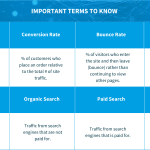
We can see below how these terms are used as assumptions to fill in an E-commerce business P&L (take a look at the colour coordination, as P&L items are supported by a number of assumptions).
P&L Assumptions
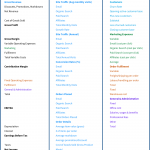
This article was written by José Ramírez Terc, specialist in 21st century business models.
About ONEtoONE
Our company, ONEtoONE Corporate Finance, is specialized in international middle-market M&A advisory. We are continuously focusing on improving the techniques to achieve the best possible price for our clients, and we also advise on acquisitions, strategic planning and valuation. We are pleased to give our opinion about company valuation or other aspects of a possible corporate operation. If you need an advisor while buying or selling a company,
contact us.




